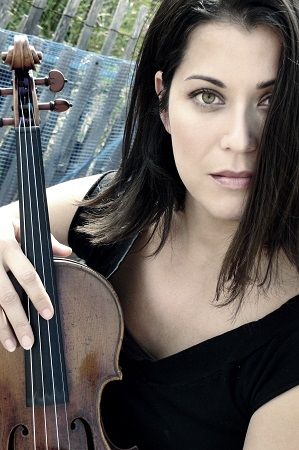 United States Brahms, Rachmaninoff: Jennifer Frautschi (violin), Canton Symphony Orchestra / Gerhardt Zimmermann (conductor), Umstattd Hall, Canton, Ohio, 13.4.2019. (TW)
United States Brahms, Rachmaninoff: Jennifer Frautschi (violin), Canton Symphony Orchestra / Gerhardt Zimmermann (conductor), Umstattd Hall, Canton, Ohio, 13.4.2019. (TW)

Brahms – Violin Concerto in D major Op.77
Rachmaninoff – Symphony No.2 in E minor Op.27
Under the baton of Maestro Gerhardt Zimmermann, the final program of the Canton Symphony Orchestra’s MasterWorks season was yet more compelling proof of this ensemble’s consummate artistry. I have always enjoyed closely observing and listening to audience reactions, and on this occasion, awestruck wonder was the order of the evening. In addition to hearing two masterpieces of the Romantic spirit — Brahms’s Violin Concerto and Rachmaninoff’s Second Symphony — the former boasted the most magnificent guest soloist in recent memory.
That honor goes to violinist Jennifer Frautschi. From the outset of the Brahms, she was a stunning presence, a breathtaking conflation of grace and grit, and at times downright ferocious. The breadth of her virtuosity — particularly powerful in the first movement cadenza, along with her deep sensitivity to the score’s nuances — worked flawlessly to conjure a gripping emotional experience.
This was no small feat, considering Brahms’s ceaseless and daunting technical challenges. Beyond the sheer agility and wide finger span required, a the soloist needs consistently strong intonation, to avoid being drowned out by the orchestral sonorities, which were never intended to be merely a soft backdrop. In that regard, Frautschi and the ensemble achieved a mesmerizing equipoise. Each navigated the work’s ebb and flow of Brahms’s rich melodic developments in a mutually energizing manner.
Equally energized, the Rachmaninoff was every bit as enthralling. When played as originally written, the symphony is an hour-long adventure, including an unusually lengthy first movement. It is not an uncommon practice for conductors to make some judicious cuts, as Maestro Zimmermann did on this occasion. But his editing did nothing to weaken or diminish Rachmaninoff’s masterful command of lyrical suspense and forward thrust.
It is a masterpiece given dramatic clarity by an electrifying ensemble. From the churning storminess of the first movement, into the sparkling syncopations of the lively second, the orchestra found not only excitement but dramatic clarity. The lovely and wistful Adagio featured an exquisite, haunting solo from principal clarinetist Randy Klein, before the festive and triumphal finale reached transcendence.
Tom Wachunas